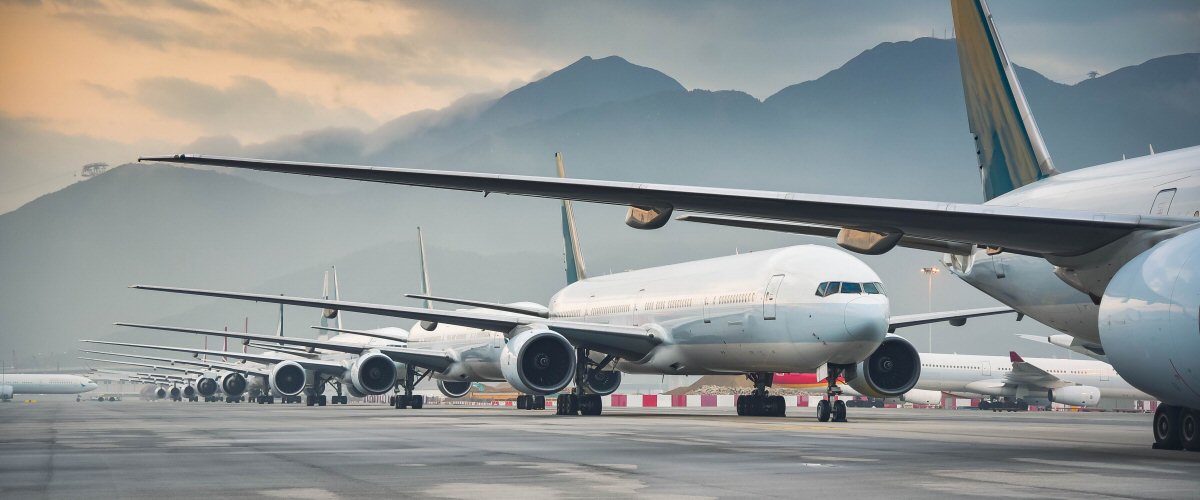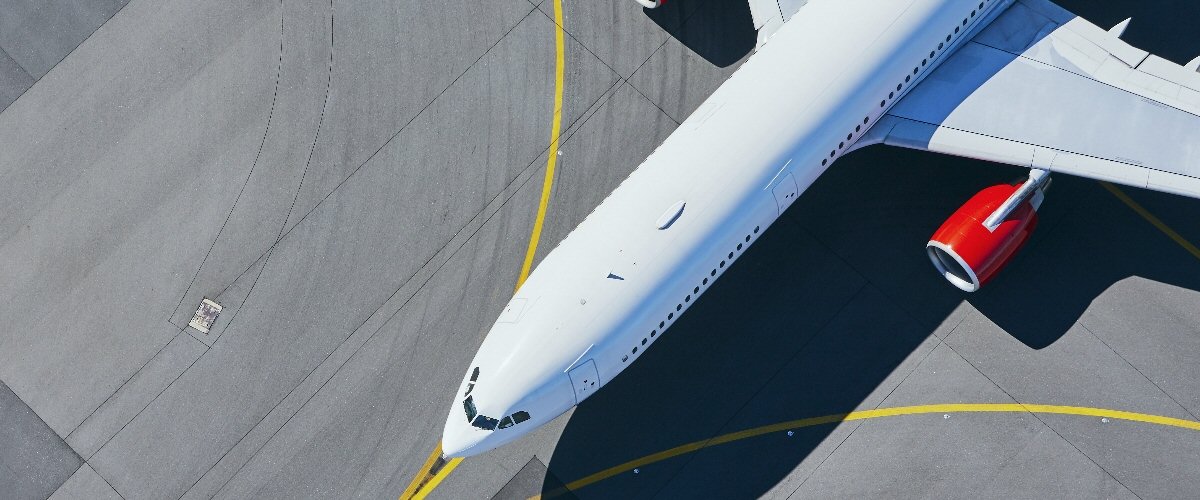Edition 12 | 28th June 2024 Download PDF
.png)
Cargo was in the spotlight more than ever during the pandemic, with airlines such as Qatar and Emirates doubling their cargo revenue, and Cathay Pacific having it become 79% of their total. As passenger traffic has recovered, this has continuously declined. With Federal Express (FedEx) committing to 22 x 757 retirements this week, it is worth recapping the takeaways of IBA’s cargo webinar to note trends and structural changes.
Yield in the pandemic rose as high as 204% of the high of 2018 (2019 missing the usual winter peak), and it has fallen since. Although, it is still at 142% of that level. Interestingly the global cargo tonnage has stayed relatively constant at around 50m tonnes in the last 10 years, showing it is principally a story of supply constraint.
The pandemic prompted a sharp uptick in conversions, with some programmes such as the A330ceo booked up 4-5 years forward. Conversions saw their peak at 204 in 2023 (126 narrowbodies, 58 widebodies and 20 regional jets/turboprops). The rate had been 70-100 a year between 2017 and 2020, however, this year is predicted to be a similar rate to 2021 and 2022 at around 160 or so. This slowdown is perhaps starting to reflect not only the yield drop affecting demand but also how supply constraints are affecting the conversion market. The same A330 programme that is oversubscribed has seen the P2F values increase due to difficulty in sourcing good quality feedstock as well as increased landing gear and engine costs. A330ceos may be back in vogue.
A worthwhile conversation point is also over-storage and utilisation. The beginning of 2022 appears to be a turning point in the global cargo fleet where the active fleet started to steadily decline from circa 80-85% to its current 75% level. As these freight rates drop, the older programmes will be less economical and will be phased out from regular use. In the narrowbody space, there is an oversupply of converted aircraft, however, the passenger market supply chain constraints will limit the feedstock, providing some support.
It is an interesting time to be in the cargo widebody space with both Airbus and Boeing offering a production freighter with the A350F, 777F and 767-300F variants. These present an interesting gamble to cargo airlines since the airframes can be utilised for a greater amount, for more revenue. However, their price tags also make that necessary! Greater adoption of these types could lead to further parking of the current fleet. Relating back to FedEx, the 22 aircraft only represent 5% of their 441 current fleet, so it's not a downturn for them as much as an adjustment. Nonetheless, 86 aircraft (19.5% of the fleet) being parked or stored is not ideal for any carrier.
IBA’s Consulting team have produced a deep-dive report on the cargo market outlook, which is now available to purchase on request. For more information and to download a sample, please click here.
Stu has talked at length about the 4,400 never-built aircraft as a direct result of the pandemic and MAX crisis. One could continue this hypothetical to include the various quality issues and rate restrictions imposed on Boeing, who would otherwise be attempting to catch up with Airbus’s relative romp.
However, IBA’s forecasting highlights that the rate trajectories proposed by both Airbus and Boeing are unsustainable. That is if either OEM would like to maintain steady production growth for the foreseeable future (say, 2040). We knew the widebody rates were unsustainable in 2019 given the order books. We should also question whether a rate of 75+ for Airbus narrowbodies, alongside current 737 rate expectations, tallies with true fleet demand in the 2040+ timeframe.
Airbus is currently targeting a lofty rate of 75 A320s per month (p/m) by 2027 (or the end of 2026). Boeing has delivered 126 737s in 2024 to date, equating to 21 per month. Pre-FAA intervention, Boeing was aiming for 55 p/m in the same timeframe. Now we expect they’d be happy with getting back to the late-30s. Taking these OEM-announced rate targets as inputs to our fleet demand and retirement models (note, not IBA expectations), and then forecasting out to 2040+, our modelling highlights an abrupt flattening of deliveries from 2028 onwards is required. Otherwise, fleet capacity will overshoot demand by a significant margin. Using fleet demand figures published by the OEMs will show a similar outcome.
Shareholders will not be happy with the implications of flat OEM production growth for 15+ years. So, what is happening here?
The most likely outcome is that production rate targets will be pushed out, gradually. Same-old. But there is more to the story. Costs are on an upward trend. Pilots, skilled engineers and technicians are becoming increasingly scarce. The cost of kerosene, with (or without) more sustainable alternatives will be higher and more volatile. This aircraft supply crunch may take years to work its way through, that is indeed, if it will ever do so… OEM shareholder satisfaction could also come from an alternative and not mutually exclusive scenario. The growth from increasing aftermarket business, for example, and under-supply keeping upward pressure on aircraft prices.
We may already be seeing demand responding to high costs and ticket prices, with demand and capacity starting to rebalance in some regions. But what if these trends continue, and how will these cost and demand dynamics affect aviation asset values in the long term? Will economic-traffic regressions have to be redrawn if demand restructures to meet a new supply/demand trajectory? Where are we in the market cycle, truly?
The true elasticity of demand in this uncertain future of supply, demand and costs is of keen interest to IBA, and a focus of our economic, market and ESG teams. Talk to us about it!
European aviation giant Lufthansa Group has announced a new "environmental cost surcharge" of up to €72 per flight to cover the rising costs associated with new green regulatory rules for airlines. This decision comes after a lacklustre response to its green fare options, which saw only 3% of passengers opting for these environmentally friendly tickets in 2023. The surcharge will apply to all tickets issued from June 26, 2024, for departures starting January 1, 2025.
The Lufthansa Group, which includes Austrian Airlines, Swiss, Brussels Airlines, and Eurowings, stated that this surcharge is necessary due to "steadily rising additional costs" from regulatory environmental requirements. These costs include the EU’s new 2% blending quota for Sustainable Aviation Fuel (SAF) starting in 2025, adjustments to the EU Emissions Trading System, and compliance costs with the Carbon Offsetting and Reduction Scheme for International Aviation (CORSIA), all of which our ESG team has covered here.
Despite investing billions in new aircraft and other sustainability measures, Lufthansa insists it cannot absorb the increasing costs from these regulatory requirements alone. This move underscores the financial pressure on airlines to comply with stringent environmental regulations while maintaining competitiveness.
Furthermore, this is all against the backdrop of low-cost airlines criticising the European Commission's plans to exempt long-haul flights from rules on monitoring non-CO2 emissions until 2027. easyJet, Ryanair and Wizz Air have united in saying that international flights account for a significant portion of aviation’s carbon emissions and operate in regions where contrail formations are most harmful. They argue that this exemption undermines the EU's environmental goals and already gives an unfair advantage to long-haul carriers.
French advisory firm Estuaire estimates that 65% of contrail impact will go unmonitored due to this exemption. The overall impact of aviation, including non-CO2 emissions like nitrogen oxides and contrail-cirrus clouds, is estimated to be up to four times greater than CO2 alone. However, these emissions are not currently accounted for in pricing.
The decision has led to questions about the influence of lobbying from European airlines and the adequacy of scientific data on contrails. There is also speculation about whether the EU Commission is aligning this decision with plans for the EU Emissions Trading System (ETS) and CORSIA, which could impose stricter compliance costs on outbound flights from 2026. Lufthansa’s sharp reaction has sparked a debate regarding the actual costs of the green transition, and how many airlines will follow suit.
Our regular update looks at the key trends and market indicators using data and analytics provided by IBA Insight.


.png)

Introducing IBA Insight, IBA NetZero and IBA Airlines – aviation's one-stop shop for intelligence. You need quick, intuitive access to the most accurate commercial aviation data. Our products are designed to provide you with seamless and simple analysis, prompting better asset decisions, enhanced risk management, and a full understanding of aviation decarbonisation strategies.

With our large team of award-winning ISTAT-qualified appraisers and over 35+ years' proprietary data, IBA is a leading player in the valuations market. Working globally, we offer independent, impartial opinion and advice on the value of a range of asset types including aircraft, engines, helicopters, freighters and air cargo, landing slots and spares. Always striving to exceed clients' expectations, IBA's objective judgement supports the required security needed for loans, asset repossession, commercial development and remarketing.

IBA works with leading aircraft and engine leasing companies from around the world. Our depth of industry knowledge informs our expert advice so we can support clients through the investment cycle, inspiring confidence at every stage of their journey. From valuations, fleet selection and portfolio development to redelivery and remarketing at lease end, we accompany clients through every risk assessment and asset management activity during the life of the lease.

Aviation investment can be an intricate affair and, with significant financial stakes involved, leaving things to chance is not an option. Whether you are investing for the first time or an established player in the market, IBA can help you cut through the complexities of the asset class to better understand investment opportunities. We can work with you to support portfolio development, diversification and to meet strategic needs.

For over 30 years IBA has worked with global and regional airlines providing valuation and advisory services, aviation data intelligence and aircraft and engine redelivery support. Working collaboratively on a variety of aviation projects spanning the world, we fulfil clients' additional resource requirements and provide project management support wherever and whenever needed.

We take a resourceful approach to litigation support and dispute resolution, identifying thoughtful solutions that are tailored to our clients' legal strategy. Our access to over 30 years of proprietary aviation data, regular involvement in strategic M&A and aircraft management expertise affords us regular access to the typical areas of contention between parties. IBA assists clients directly or via their legal teams across many aspects ranging from insurance related settlement for aircraft damage or loss, to disputes between lessors and lessees - often at redelivery.